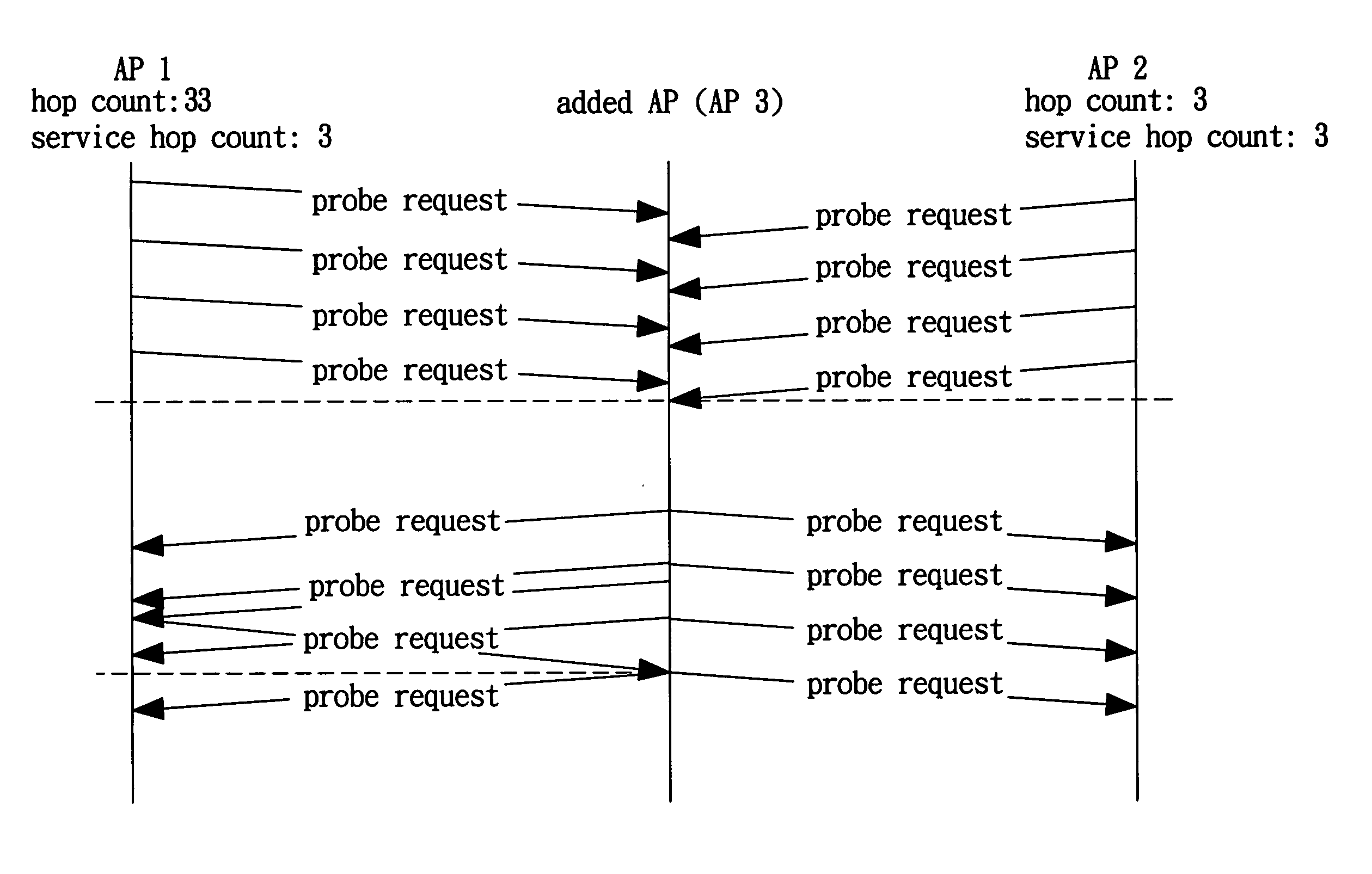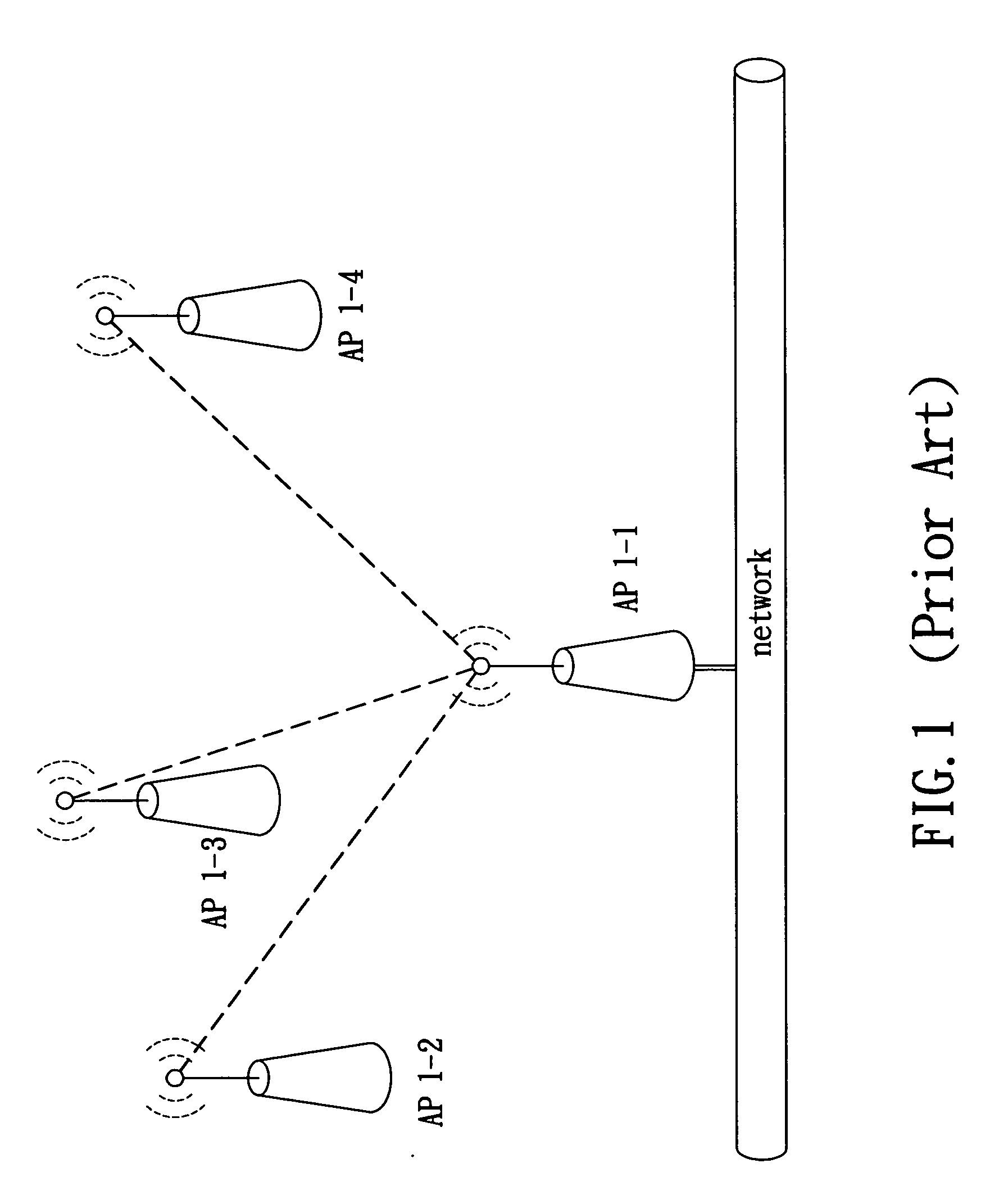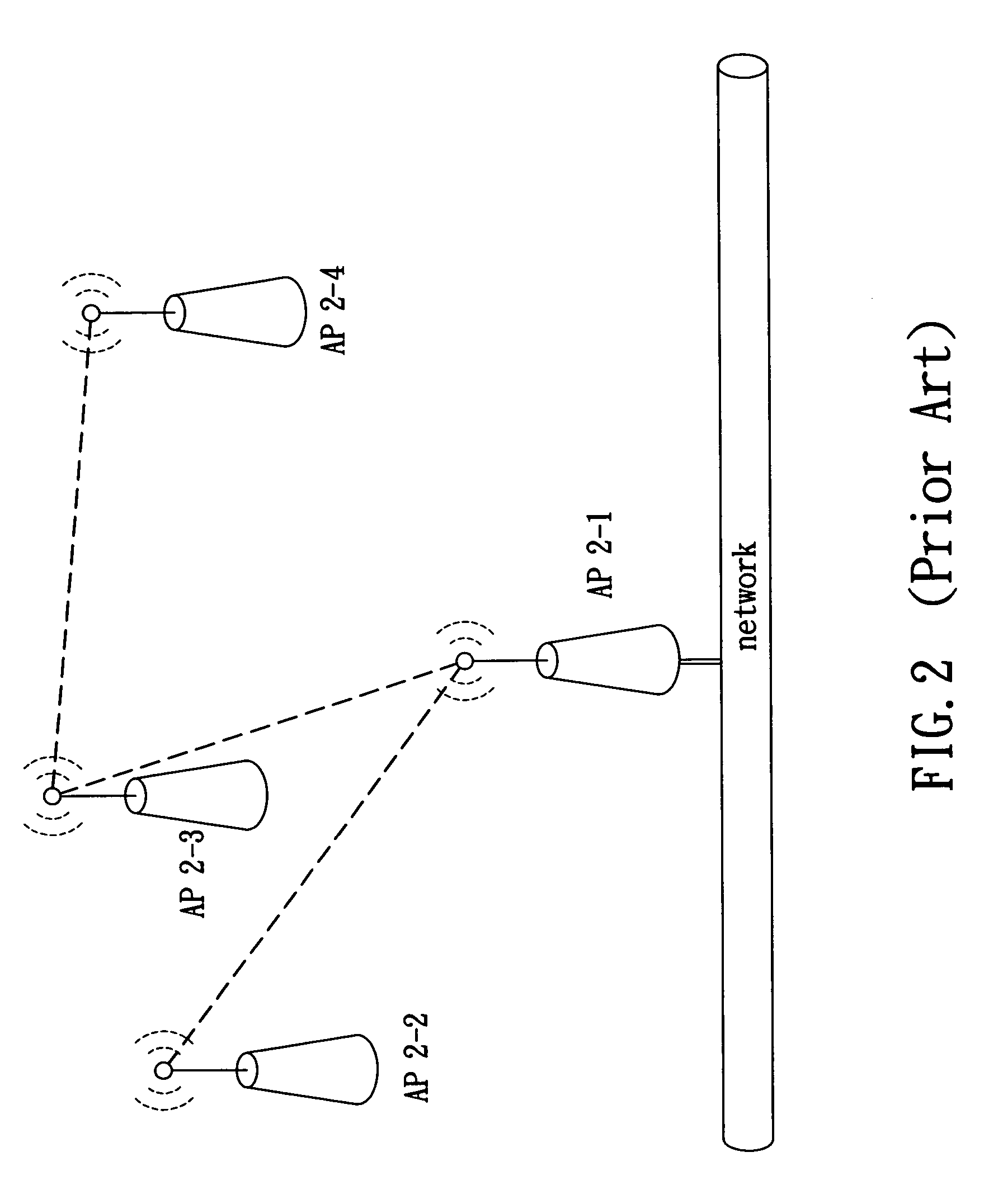Dynamic wireless meshing network for supporting load balance and flow control
a wireless meshing network and dynamic technology, applied in the field of wireless networking, can solve the problems of no relevant draft initiated, no published standard for ieee 802.11 wireless networking based meshing network, and the inability of wireless meshing network development by network service providers to meet the needs of vast users, etc., to achieve fast and automatic configuration, increase the performance of wireless meshing network, and high efficiency
- Summary
- Abstract
- Description
- Claims
- Application Information
AI Technical Summary
Benefits of technology
Problems solved by technology
Method used
Image
Examples
Embodiment Construction
[0037] In IEEE 802.11 standard, three types of frame are defined. Namely, management frame, data frame, and control frame. The management frame serves as a communication frame between an AP and a station (STA). That is, communication between an AP and a STA is made possible via the management frame in order to then determine whether a link should be established. The invention applies management frame features to different APs based on management frame functionalities such that a link between any two APs (i.e., wireless link between APs) thus can be established. The management frame is adapted to communicate based on an information element (IE) contained therein. Thus, an AP must maintain the integrity of IE based on setting and states itself in order to appropriately send IE by management frame. Thus, as contemplated by the invention an added IE is adapted to provide a WDS state to AP. Any AP is able to determine other APs' operations in WDS based on received IE. Next, the AP can de...
PUM
 Login to View More
Login to View More Abstract
Description
Claims
Application Information
 Login to View More
Login to View More - R&D
- Intellectual Property
- Life Sciences
- Materials
- Tech Scout
- Unparalleled Data Quality
- Higher Quality Content
- 60% Fewer Hallucinations
Browse by: Latest US Patents, China's latest patents, Technical Efficacy Thesaurus, Application Domain, Technology Topic, Popular Technical Reports.
© 2025 PatSnap. All rights reserved.Legal|Privacy policy|Modern Slavery Act Transparency Statement|Sitemap|About US| Contact US: help@patsnap.com



